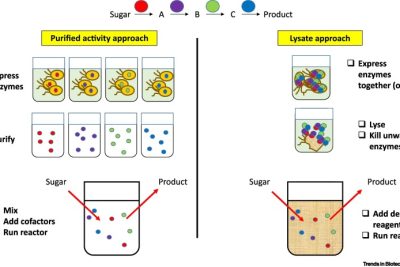
Ozone Depleting Potential: Facts, Effects, and Solutions

The issue of ozone depleting potential has become a focal point in environmental science and public policy over the past few decades. Humanity's ongoing reliance on various chemical compounds has led to a gradual yet alarming depletion of the ozone layer, particularly in polar regions. The ozone layer plays a crucial role in absorbing harmful ultraviolet (UV) radiation from the sun, protecting both the Earth’s ecosystems and human health. Understanding the concept of ozone depleting potential is vital for researchers, policymakers, and the public to grasp how certain substances can contribute to this global crisis.
As our understanding of the factors affecting the ozone layer has evolved, so have the solutions aimed at mitigating the **ozone depleting potential** of various chemicals. In the face of mounting evidence linking human activity to ozone depletion, concerted global efforts have been made to phase out the usage of substances like chlorofluorocarbons (CFCs), which have devastating effects on ozone concentrations. This article aims to provide a comprehensive overview of the facts, effects, and solutions related to ozone depletion to foster better awareness and action.
- Understanding Ozone Depleting Potential
- Historical Context of Ozone Depletion
- Key Contributors to Ozone Depletion
- Effects of Ozone Depletion on Health and Environment
- The Role of CFCs and Other Halocarbons
- Global Response to Ozone Depletion
- Current Status of the Ozone Layer
- Innovations and Solutions for Ozone Protection
- Future Challenges and Considerations
- Conclusion
Understanding Ozone Depleting Potential
Ozone depleting potential (ODP) refers to a measure of how much a substance can contribute to the depletion of the stratospheric ozone layer compared to CFC-11, which is assigned a value of 1. This statistical measure provides a standardized way to compare the relative impact of various compounds on ozone depletion. As we analyze different substances, particularly halocarbons, their ODP can range widely, highlighting the need for regulation and alternatives to mitigate adverse effects on the ozone layer.
The Importance of Ozone Layer
The ozone layer, situated in the stratosphere, is incredibly important for life on Earth as it filters out the majority of the sun's harmful UV radiation. Too much UV exposure can lead to skin cancer, cataracts, and other health issues in humans, as well as damaging plant life and aquatic ecosystems. The maintenance of a stable ozone layer is thus critical for both ecological and biological systems. Understanding the ozone depleting potential of various compounds helps policymakers make informed decisions about these substances' regulation and usage in industrial applications.
Historical Context of Ozone Depletion
The exploration of ozone depletion began in earnest during the late 1960s. In 1974, Mario Molina and F. Sherwood Rowland published a groundbreaking paper that highlighted the damaging effects of CFCs on the ozone layer. Their research indicated that when CFCs are released into the atmosphere, they eventually rise up into the stratosphere, where UV light breaks them down, releasing chlorine atoms. A single chlorine atom can destroy thousands of ozone molecules, leading to significant thinning of the ozone layer over time.
Research Evolution
Following the initial findings of Molina and Rowland, further research established strong correlations between the rise in ODP substances and ozone layer thinning. The formation of the Antarctic ozone hole, first observed in the early 1980s, served as a pivotal moment that catalyzed international awareness and urgency. By demonstrating the tangible effects of human activity on a critical atmospheric layer, scientists demanded immediate action to tackle the growing problem.
Key Contributors to Ozone Depletion
Substances classified as having significant ozone depleting potential include CFCs, halons, carbon tetrachloride, and methyl chloroform. These compounds were widely utilized in refrigeration, aerosol propellants, and plastic manufacturing. The widespread usage of CFCs in consumer products and industries resulted in their accumulation in the atmosphere, contributing to alarming rates of ozone loss.
Chlorofluorocarbons (CFCs)
CFCs are one of the primary culprits behind ozone depletion, known for their stability and ability to remain intact in the lower atmosphere for long periods. Once they reach the stratosphere, they undergo photodissociation, releasing chlorine atoms that initiate a process that breaks down ozone molecules. The discovery of the long-lasting effects of CFCs on atmospheric health was central to the emergence of international agreements aimed at reducing their usage.
Effects of Ozone Depletion on Health and Environment
The depletion of the ozone layer has far-reaching implications for both human health and the environment. Increased levels of UV radiation penetrate the Earth's surface, leading to higher rates of skin cancer and cataracts in humans. Beyond health concerns, ecosystems also suffer as UV radiation affects plant growth, reduces crop yields, and disrupts aquatic ecosystems such as coral reefs, which are particularly sensitive to changes in UV exposure.
Impact on Human Health
Research has shown that with each 1% decrease in the ozone layer, the incidence of skin cancer can increase significantly. Sensitive populations, such as children and the elderly, are particularly at risk. Moreover, increased UV radiation can lead to weakened immune responses, making individuals more susceptible to infectious diseases and other ailments.
Environmental Impacts
Ozone depletion doesn’t just impact human health; it has dire consequences for wildlife as well. Increased UV exposure harms phytoplankton, the cornerstone of aquatic food webs. The effects can ripple through ecosystems, leading to population declines in marine animal species that rely on these organisms. Terrestrial vegetation is also affected, with changes in plant growth patterns and photosynthesis rates posing significant threats to global food security.
The Role of CFCs and Other Halocarbons
Chlorofluorocarbons (CFCs) and other halocarbons have been at the forefront of discussions about ozone depleting potential. They are potent greenhouse gases that exacerbate the global warming crisis, further complicating the fight against climate change. Understanding the dual role these substances play in both ozone layer depletion and global warming is essential for developing comprehensive environmental policies.
Alternatives to CFCs
In response to the identified dangers of CFCs, research into alternative substances has become a priority. Hydrofluorocarbons (HFCs) were initially introduced as a safer replacement; however, they are also potent greenhouse gases. Therefore, the search for more sustainable and environmentally friendly alternatives continues. Innovations in this area are crucial for addressing both the ozone depletion and climate change crises simultaneously.
Global Response to Ozone Depletion
The global community's response to the issue of ozone depletion gained momentum with the adoption of the Montreal Protocol in 1987. This landmark international agreement aimed to phase out substances responsible for ozone depletion, particularly CFCs and halons. The success of the Montreal Protocol has been attributed to the collaboration of nations, businesses, and scientific communities to protect the ozone layer.
Effectiveness of the Montreal Protocol
Since the enactment of the Montreal Protocol, there has been significant progress in reducing the emissions of ozone-depleting substances. Scientific assessments indicate that the ozone layer is on a trajectory toward recovery, with projections suggesting that it could return to pre-1980 levels by mid-century if current efforts are maintained. The effectiveness of this global agreement demonstrates the power of international collaboration and collective action in addressing environmental issues.
Current Status of the Ozone Layer
As of now, the status of the ozone layer has shown signs of improvement due to the reduction of ozone depleting potential substances. Various reports indicate that the thickness of the ozone layer is gradually increasing, particularly in the Antarctic region. However, concerns remain regarding the potential for illegal production and use of banned substances, emphasizing the need for ongoing monitoring and regulation.
Monitoring and Research Initiatives
Continuous monitoring of the ozone layer is essential for tracking progress and ensuring compliance with international agreements like the Montreal Protocol. Various organizations, such as the World Meteorological Organization (WMO) and the United Nations Environment Programme (UNEP), are involved in the ongoing assessment and reporting of ozone layer health. Advanced satellite technology and ground-based research are crucial tools in understanding the dynamics of ozone depletion.
Innovations and Solutions for Ozone Protection
Innovative technological solutions play a vital role in the ongoing fight against ozone depleting potential. Research is focused on finding alternatives to harmful substances, enhancing efficiency in industrial processes, and developing new materials that are less harmful to the ozone layer. Additionally, education and awareness campaigns help inform the public and businesses about the importance of protecting the ozone layer and the actions they can take.
Emerging Technologies
Emerging technologies, such as biobased chemicals and natural refrigerants, offer promising alternatives to traditional ODP substances. With ongoing research and investment in sustainable practices, the potential to phase out ozone-depleting compounds becomes increasingly feasible. Collaborations among academic institutions, industry leaders, and NGOs are essential to accelerate these innovations and bring them to market.
Future Challenges and Considerations
Despite the successes achieved, various challenges remain in the fight against ozone depletion. Emerging compounds, such as HFCs, pose new threats as they may not affect the ozone layer but contribute to global warming. Therefore, comprehensive policies that target both ozone layer protection and climate change mitigation are necessary. Stronger regulations and compliance mechanisms must be established to prevent the illegal manufacturing and use of ozone-depleting substances.
The Role of Policy and Advocacy
Policy implementation and advocacy play critical roles in ensuring the ongoing protection of the ozone layer. International cooperation must continue to be robust, with nations holding each other accountable for compliance with treaties and agreements. Grassroots movements and awareness campaigns can further enhance public support for protective measures, ultimately leading to more substantial policy reforms.
Conclusion
The understanding of ozone depleting potential has come a long way since the initial discoveries of its detrimental effects. While significant strides have been made in reversing ozone depletion trends, ongoing vigilance, research, and innovation are essential to safeguard this critical component of our atmosphere. The collaborative efforts demonstrated through international agreements like the Montreal Protocol serve as powerful examples of what can be achieved when nations unite for a common cause. Moving forward, sustained commitment and proactive measures will be required to ensure the recovery of the ozone layer and, in turn, the protection of public health and the environment.
Did you find this article helpful? Ozone Depleting Potential: Facts, Effects, and Solutions See more here Education.
Leave a Reply






Related posts